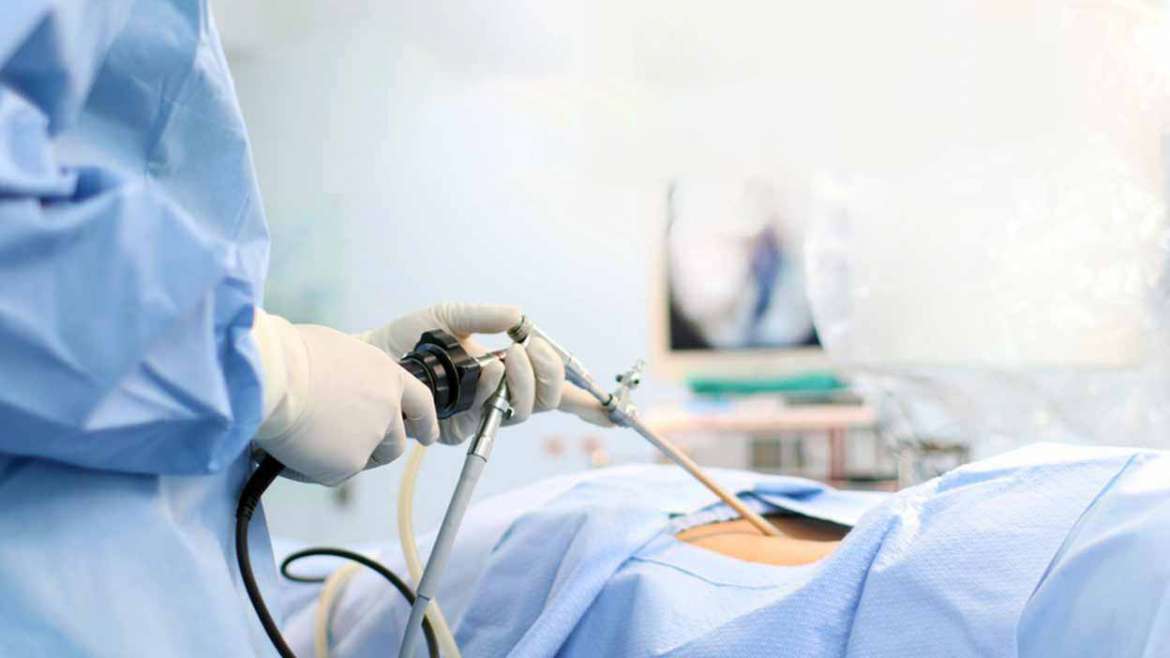What is Endoscopic Surgery?
Endoscopic surgery is a minimally invasive technique. (Minimal Damage in tissue). Endoscopic surgery provides natural access to the body, or a faster healing process occurs after treatment with small incisions.

Endoscopic surgery uses steps that go through small incisionsor natural body openings to diagnose and treat the disease. Another popular term in endoscopic surgery is minimally invasive surgery(MIS), this emphasizes that diagnose and treatments can be done with low body cavity infestation.
The surgical instruments are compeletely under the control of the surgeon and an endoscopic camera can be used to visualize the surgical site. Postoperative freedom and movement and wound healing are quicker than open surgeries. Patients may return to their working and active lives much sooner after surgery. However, the chest and well structure and the anatomy of the heart must be appropriate for the endoscopic technique to be applied.
Diseases we applied Endoscopic Surgery

Laparoscopic and Hysteroscopic Diseases
Gynecological operations such as removal of fibroids, removal of cysts, correction of uterine anomalies, opening and removal of tubes, which may be necessary before or after infertility tratment. You can return to your daily life by healing much faster.
Endoscopic surgery methods in the treatment of gynocological diseases.
Endoscopic surgery is divided into two gruops as Laparoscopy and Hysteroscopy.
In laparoscopic surgery, three incisions of 0.5cm in the abdomen are poured and imaging of the abdomen with the help of the camera. Almost all operations related to gynecological diseases can be performed by entering these small places.
Hysteroscopic surgery is teh observation of the inside of the uterus with the help of camera and the application of diagnosis and treatment together.
What are the advantages of laparoscopic surgery over open surgery?
In the operations performed with laparoscopic surgery,the patient feels less pain after the operation, shorter discharge time, can return to daily activity more quickly and easthetically no scarring is seen in open surgery.
Which operations can be performed in Gynecological Diseases in Laparoscopic Surgery?
Laparoscopic surgery is performed almost in all of the gynecological diseases.
The basic principle of laparoscopy is the ovarian cystoperations of the patient,fibroid operations,tube-related operations, uterine removal ( hysterectomy), urinary incontinence operations, uterine sagging operations, bladder sagging operations,uterine cancer and endometrical cancer operations.
The patient is discharged from the hospital othe same day or the following day and returns to her daily life within the same week.
Laparoscopic surgery is frequently used in the diagnosis and treatment of infertility. If the uterine canals are closed or not, the dyed metarial can be defined during laparoscopy and the obstructed part can be opened easilyin the outer parts of the canal and if the canal function ,it can be ensured to become pregnant. Uterine fibroids can be easily removed by laparoscopy. Chocolate cysts(endometrioma) which are thought to cause infertility and reduce the ovarian capacity when left untreated are also removed with minimal damage to egg tissue.
What is Hysterescopic Surgery?
Hysterescopic surgery is the visualization of the uterus through camera and the recognition and treatment of abnormal formations in the uterus. For this purpose, a device called hysteroscope is placed in the uterus and boyh diagnosis and treatment are provided.
Who Should Be Bone Hysteroscopy?
Since hysteroscopy is performed for both diagnostic and therapeutic purpose,it can be performed to remove unwanted structures such as polyps, fibroids which are suspected on ultrasonography and to normalize the inside of the uterus in the presence of a septum congenital and to open the adhesions ıf there is intrauterine adhesion.
What Is The Role Of Hysteroscopy In The Diagnosis and Treatment of Infertility?
Harmful structures in the uterus,polyps,fibroids,septum must be removed before infertility treatment because a good quality embryo obtained by assisted reproductive methods can not continue ıts development ıf the uterus is not suitable. Again, if there is adhesion in the uterus it should be opened bu hysteroscopy before a new treatment for the same reason. It is recommended to look into the uterus by hysteroscopy before a new treatment in patients who have not achieved pregnancy despite good quality embryo transfer in repeated in vitro fertilization applications.
In the hysteroscopy performed for diagnostic purposes, the structure and vascularization of the lining of the uterus can be evaluated before IVF treatment. In hysteroscopies performed by therapeutic purposes, anesthesia is usually given and after the cervix is enlarged a device called electro resector is inserted. Electro resector is the same device that urologists use for prostate resection. With his device, the curtains in the uterus can be cut (septum incision),large polypsand fibroids can be removed. In addition intrauterine adhesions can be opened.
Hysteroscopic polyp excision surgery videos
By hysteroscopy, the cell layer (endometrium)covering the inner layer of the uterus can be removed to treat women with excessive bleeding and who no longer wish to have children. This process is called endometrial ablation. The use of scissors or lasers with hysteroscopy is also possible,but today electricity is often used.

